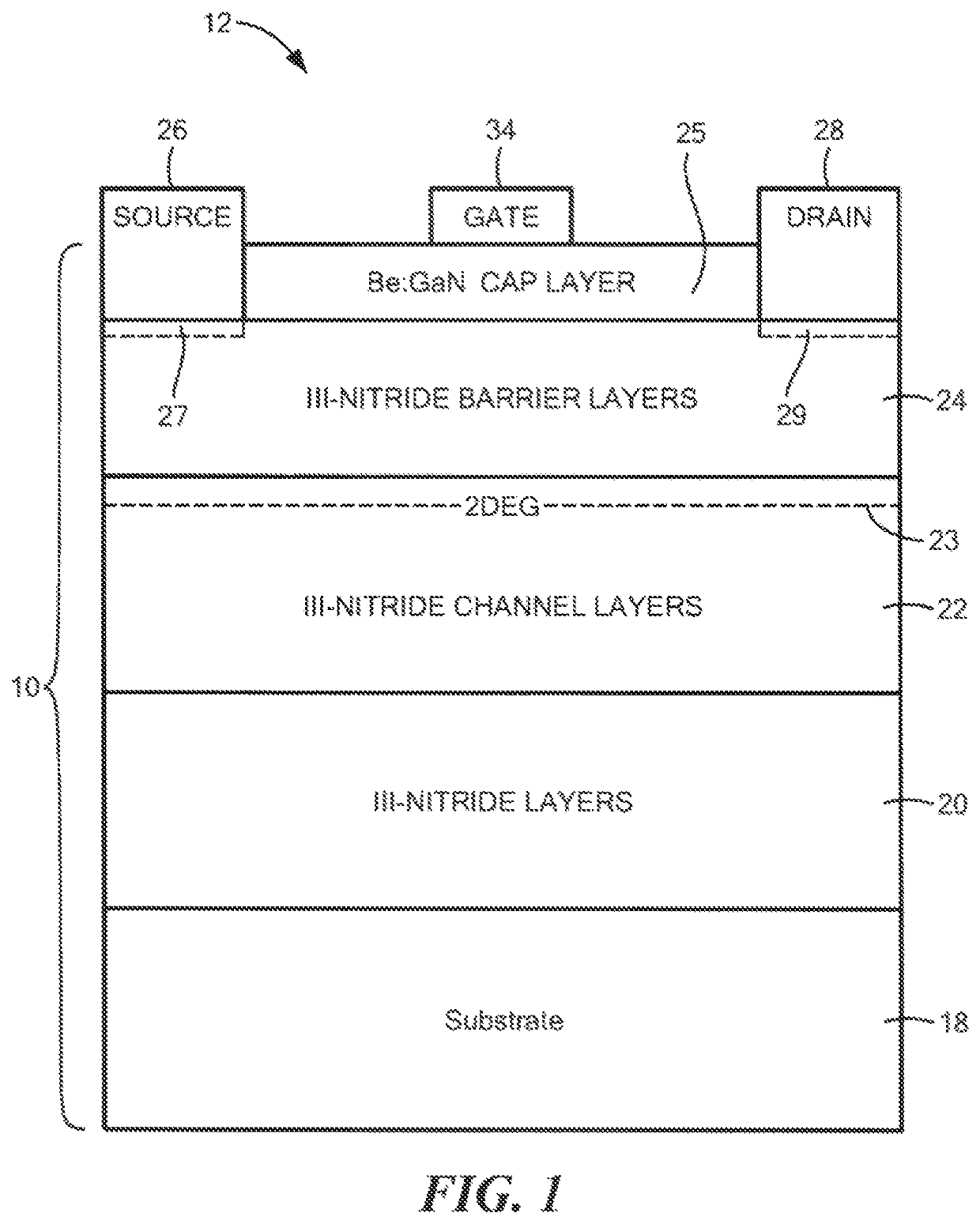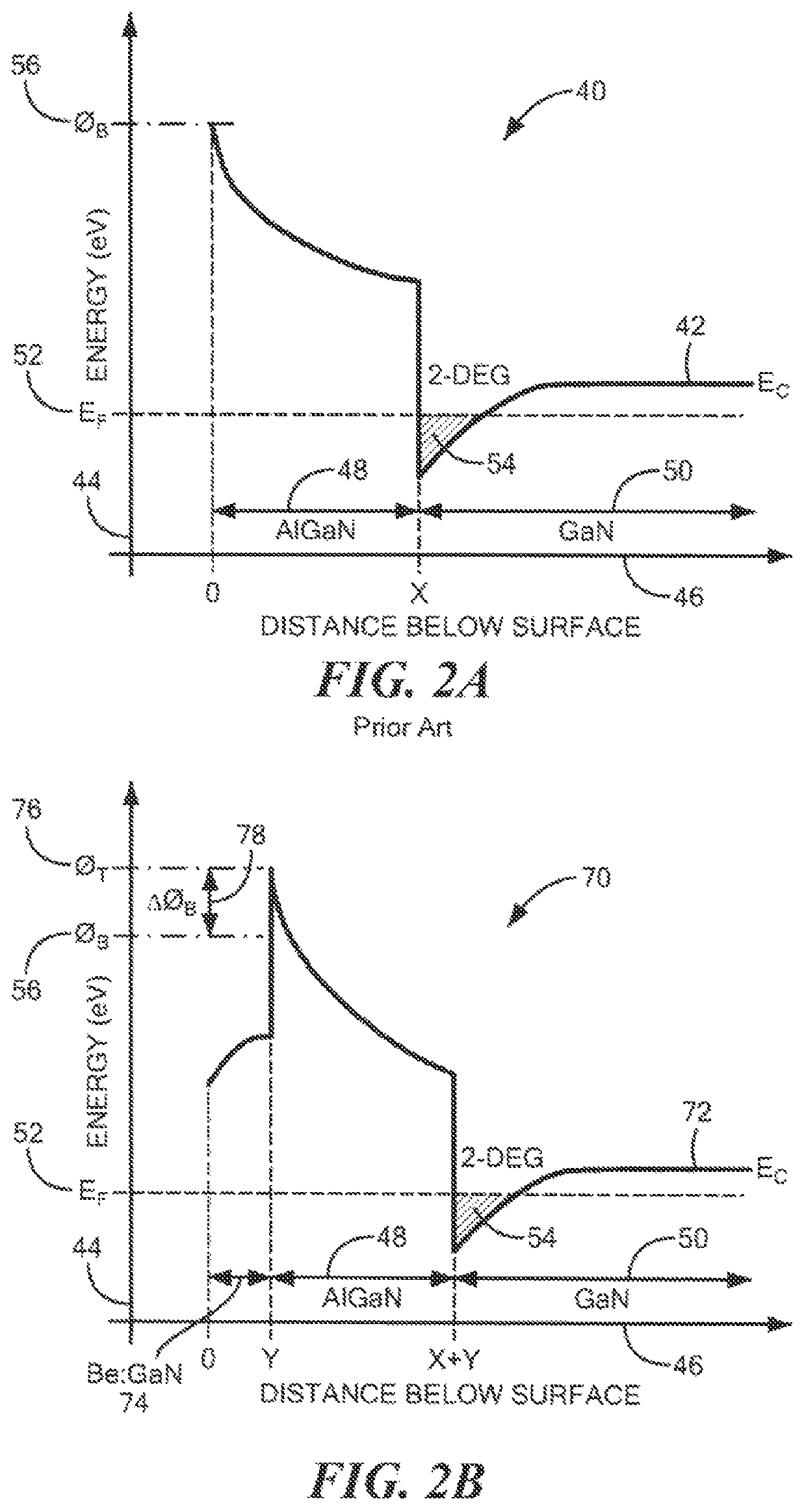Depletion mode high electron mobility field effect transistor (HEMT) semiconductor device having beryllium doped Schottky contact layers
a technology of hemt and schottky, which is applied in the direction of semiconductor devices, electrical equipment, basic electric elements, etc., can solve the problems of future growths at risk of increased levels of magnesium background impurity incorporation, unstable operation of fets, and mis approach, and achieves efficient creation of acceptor level states in gan, enhance schottky barrier height, and enhance the effect of schottky
- Summary
- Abstract
- Description
- Claims
- Application Information
AI Technical Summary
Benefits of technology
Problems solved by technology
Method used
Image
Examples
Embodiment Construction
[0020]Referring now to FIG. 1, a semiconductor structure 10 is shown having a depletion mode (D-mode) field effect transistor 12, here a D-mode HEMT. The D-mode HEMT 12 includes a source electrode 26, a drain electrode 28 and a gate electrode 34 disposed between the source electrode 26 and the drain electrode 28, as shown.
[0021]More particularly, the semiconductor structure 10 includes a single crystal substrate 18, here for example silicon carbide (SiC), and an epitaxially grown Group III-Nitride structure, here a stack of epitaxially grown Group III-Nitride structure semiconductor layers 20, 22, 24; layer 20 being one or more epitaxial grown Group III-Nitride materials forming nucleation and buffer regions of a HEMT structure, layer 22 being epitaxially grown undoped Group III-Nitride channel material with lower resistivity than the layer 20 materials, here for example GaN, and layer 24 being one or more epitaxial grown Group III-Nitride barrier materials, here for example AlGaN. ...
PUM
| Property | Measurement | Unit |
|---|---|---|
| thickness | aaaaa | aaaaa |
| thickness | aaaaa | aaaaa |
| thickness | aaaaa | aaaaa |
Abstract
Description
Claims
Application Information
 Login to View More
Login to View More - R&D
- Intellectual Property
- Life Sciences
- Materials
- Tech Scout
- Unparalleled Data Quality
- Higher Quality Content
- 60% Fewer Hallucinations
Browse by: Latest US Patents, China's latest patents, Technical Efficacy Thesaurus, Application Domain, Technology Topic, Popular Technical Reports.
© 2025 PatSnap. All rights reserved.Legal|Privacy policy|Modern Slavery Act Transparency Statement|Sitemap|About US| Contact US: help@patsnap.com


